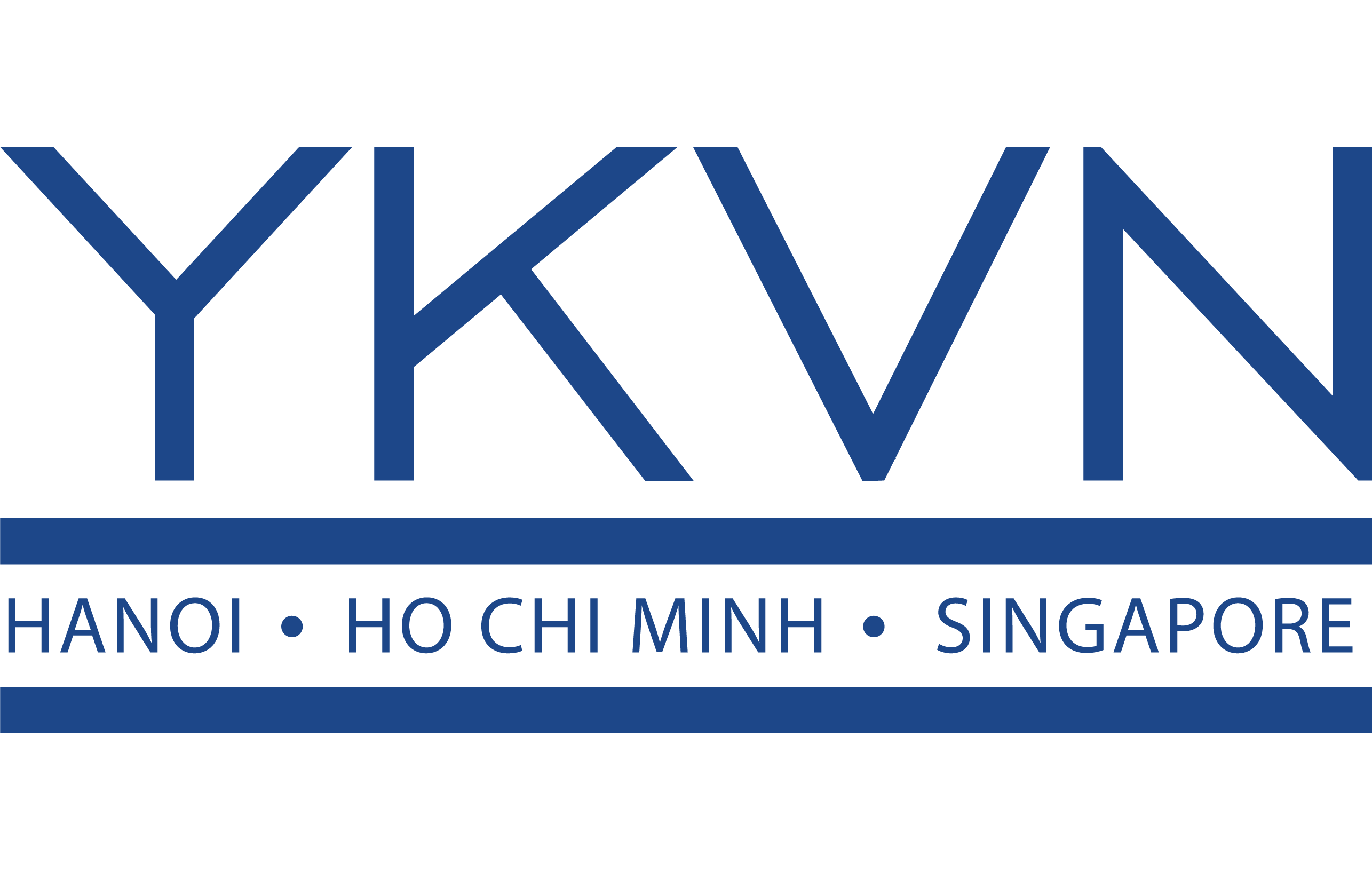Intriguing Developments: Central Bank’s Policy on Foreign Borrowing Grabs Spotlight
July 25, 2023

Highlights
- Foreign borrowing in Vietnamese Dong is permitted even if a lender disburses and receives payment in foreign currency but the debt obligation is denominated in Vietnamese Dong.
- Foreign borrowing could be used for various purposes, including (i) refinancing of foreign debts; (ii) payment of short-term liabilities (except for principal of domestic debts); (iii) financing of licensed investment projects; and (iv) financing of “production and business plans, business operations, and other projects.”
- Refinancing of domestic debts using foreign borrowing is generally not permitted. It appears that short term borrowing could be used to pay interest and other amount (other than principal) of domestic debts.
- Short-term foreign borrowing for M&A purposes is also not allowed. Medium- to long-term foreign borrowing for M&A purposes may be considered on a case-by-case basis, especially for local business investments in a target or subsidiary operating in the same business sector.
- There is no fixed cap on borrowing costs, although the SBV may set a cap from time to time if necessary. If a cap is set in the future, it may impact the parties’ agreement on interest, IRR, fees, and even indemnities.
- The approval mechanism for foreign borrowing largely remains unchanged. Short-term borrowing does not require registration with and approval from the SBV. However, medium- to long-term borrowing must be registered with and approved by the SBV. Documents required to be prepared and submitted to the SBV provide information or evidence regarding each permitted purpose of foreign borrowing.
- The applicable exchange rate for calculations involving different currencies is the exchange rate announced by the Ministry of Finance (State Treasury) at the relevant time.
- Borrowers are subject to several obligations which they should be aware of.
Introduction
Foreign borrowing (including loans from foreign lenders and issuance of international bonds) is a significant source of capital for businesses operating in Vietnam. It serves as a crucial means to supplement domestic borrowing, especially when credit limits hinder businesses from borrowing domestically. Under banking regulations, banks are required to adhere to prudential ratios applicable to credit activities. Notably, domestic banks are restricted from extending credit to a borrower or a group of related parties exceeding 15% or 25% of the bank’s capital, respectively. Furthermore, other specific restrictions apply to borrowing for real estate, securities, and investment in speculative or high-risk sectors. To mitigate risks to the economy and the banking system, the State Bank of Vietnam (“SBV”) has adopted measures to control credit growth in these sectors.
Amidst an economic slowdown due to global turmoil, supply chain disruption, and default risks, local businesses are facing a pressing need for fresh capital to sustain operations or restructure financial obligations. Alongside traditional lenders like domestic and foreign banks, private equity firms or special situation/distressed funds have stepped up their activities. Consequently, the lending landscape has witnessed the adoption of more intricate structures and terms, especially in transactions where businesses seek capital in challenging situations.
Against this background, the SBV policy towards foreign borrowing has attracted significant attention. The SBV introduced a draft circular in June 2022 to replace Circular No. 12/2014/TT-NHNN (SBV, March 31, 2014) (the “Current Circular”). After several rounds of public consultation, the SBV recently issued Circular No. 08/2023/TT-NHNN on 30 June 2023 (the “New Circular”), setting conditions for foreign borrowing not guaranteed by the government. The New Circular will take effect on August 15, 2023, and will not apply retroactively (i.e., foreign borrowing signed before August 15, 2023 will continue to be governed by the Current Circular and not subject to the New Circular).
Like the Current Circular, the New Circular does not apply to individual borrowing and foreign borrowing guaranteed by the government. The prohibition on foreign borrowing by individuals remains in place. Government-guaranteed foreign borrowing, which is related to Vietnam’s public debt, falls under a separate management framework. While foreign borrowing is primarily composed of loans from foreign lenders, the New Circular explicitly includes issuance of international bonds within its scope, thereby extending the regulatory reach to govern capital markets transactions.
Through multiple rounds of public consultation, the SBV has considered and incorporated stakeholders’ input and suggestions. The New Circular no longer imposes several requirements initially proposed in earlier drafts, including (i) a cap on borrowing costs, (ii) a cap on total foreign debt of a borrower, and (iii) foreign exchange hedging requirements. The officially issued version of the New Circular adopts a more flexible approach in relation to these concerns.
Currency Type
Foreign borrowing is traditionally disbursed and repaid in foreign currencies, with the US Dollar being the most common. Foreign currency borrowing is permitted under the Current Circular and the New Circular.
Under the Current Circular, foreign borrowing in Vietnamese Dong is also permitted in the following cases: (i) when the borrower is a microfinance institution; (ii) when the borrower is a foreign-invested company borrowing from its foreign investor using retained earnings distributed to such foreign investor; and (iii) “in other cases” as approved by the SBV Governor.
The New Circular does not alter the permitted cases in items (i) and (ii) and defines the “other cases” in item (iii) more explicitly. Specifically, foreign borrowing in Vietnamese Dong is permitted if a lender disburses and receives payment in foreign currency but the debt obligation is denominated in Vietnamese Dong. This situation commonly arises in practice when the borrower wishes to avoid exchange rate risks. For example, the loan commitment is denominated in the loan agreement and disbursed in US Dollars, which is converted to Vietnamese Dong at the exchange rate agreed between the borrower and the lender. The loan is then recorded in a promissory note in Vietnamese Dong, and interest accrues at the agreed interest rate on the Vietnamese Dong principal. On a scheduled payment date, the borrower pays the principal and interest in Vietnamese Dong and assists the lender to convert the Vietnamese Dong to US Dollars at the prevailing exchange rate. The remittance of the converted US Dollars is then made to the lender. This repayment structure in Vietnamese Dong enables the borrower to mitigate foreign exchange risks.
Foreign borrowing in Vietnamese Dong offers an alternative to preferred share structures, which typically include dividend preference and redeemable preference in the same currency. It is essential to recognize that borrowing constitutes a debt instrument, while preferred shares are, in most cases, equity instruments. A debt instrument carries priority rights in interest payment, liquidation, or repayment that may not be available to equity holders, even those holding preferred shares. In cases where the lender does not agree to bear foreign exchange risks, it is more suitable to structure the borrowing as a foreign currency loan.
Purpose of Foreign Borrowing
Like the Current Circular, the New Circular maintains a clear distinction between short-term foreign borrowing (with a maturity of up to 1 year) and medium- to long-term foreign borrowing (with a maturity exceeding 1 year). However, the New Circular introduces significant changes aimed at clarifying the purposes of each category of foreign borrowing.
| Purposes of short-term foreign borrowing | Purposes of medium to long-term foreign borrowing |
|---|---|
|
|
Refinancing of foreign debts of the borrower
The New Circular clarifies that refinancing of foreign debts is an available option in cases of both short-term and medium- to long-term foreign borrowing. This is a welcome clarification.
Significantly, the Current Circular requires that the cost of new foreign borrowing not be higher than the cost of the existing foreign debt being refinanced, and this requirement is not retained in the New Circular. This is also a very welcome policy change because the borrowing costs in a restructuring or distressed situation are typically high, especially when compared to the borrowing costs incurred during a period when businesses could secure funding at more favorable rates.
Regarding the term of the new borrowing compared to the existing foreign debt to be refinanced, the New Circular remains silent, indicating there are no restrictions in this regard. It stands to reason that short-term foreign borrowings could be used to refinance medium- to long-term foreign debts. This flexibility is also needed in a restructuring or distressed situation.
Apart from refinancing of foreign debts, the purposes of short-term foreign borrowings on the one hand and medium- to long-term foreign borrowings on the other hand differ significantly. In the following sections, we will delve deeper into these distinct purposes.
Payment of short-term liabilities of the borrower
Short-term foreign borrowing could be used for payment of short-term liabilities of the borrower. The SBV has attempted to clarify the scope of this purpose by referencing to the definition of short-term liabilities under Vietnamese accounting rules. These include liabilities recorded in item 310 in the balance sheet (i.e., current liabilities) and encompass short-term trade payables, taxes and other government payments, amounts payable to employees, short-term payables, payments under construction contracts, etc.
We note 2 issues.
- First, according to Vietnamese accounting rules, short-term liabilities include short-term borrowings and short-term lease liabilities. However, Circular 08 explicitly states that these short-term liabilities do not include the principal of domestic debts. This means that Circular 08 does not permit using short-term foreign borrowing to refinance the principal of domestic debts, although it appears to allow using short-term foreign borrowing to pay interest and other amount payable of domestic debts. The permission to use short-term foreign borrowing for interest expense is evident since interest expense is one of the short-term liabilities recorded under item 310 in the balance sheet.
- Second, there is ambiguity regarding whether Circular 08 allows using short-term borrowing for M&A purposes. It appears that short-term liabilities recorded in item 310 of the balance sheet do not encompass payments for capital contribution and share acquisition. As the purpose of short-term borrowing is limited to short-term liabilities recorded in item 310, it stands to reason that financing for M&A purposes using short-term borrowing is not permitted. One interesting structure that has been developed in the market lately involves deferred payment arrangements. Consideration could be paid by way of a promissory note issued by the buyer to the seller which will be due in the future. In effect, such promissory note (depending on its maturity and accounting treatment) could create a short-term liability. At present, it is unclear whether short-term borrowing can be used to finance such deferred payment obligation under a promissory note. Further clarification is required in this aspect.
Financing of licensed investment projects of the borrower and financing of “production and business plans, business operations, and other projects” of the borrower
The financing of investment projects of the borrower is limited to projects with investment licenses. The New Circular requires that to be financed, those projects must have obtained one of the three types of investment licenses, namely (i) investment certificates, (ii) investment registration certificates, or (iii) investment in-principal approval. Those types of licenses are granted according to investment law. Notably, these types of investment licenses primarily apply to foreign owned projects and other projects with high investment value. In other words, not all investment projects have one of the above three types of licenses. In addition, the total principal amount (excluding interests and other amounts payable) of all medium- to long-term foreign borrowings cannot exceed the loan capital of a licensed investment project (defined as total invested capital minus equity capital, each as set out in the investment licenses).
For projects lacking the aforementioned licenses, their loan applications submitted to the SBV must demonstrate that the borrowing is intended for financing “production and business plans, business operations, and other projects.” However, Circular 08 does not offer further specific guidance on this purpose, leaving the approval of foreign borrowing to SBV’s discretion.
We note 2 issues.
- First, financing of licensed investment projects and “production and business plans, business operations, and other projects” do not encompass refinancing of domestic debts. The New Circular does not allow using medium- to long-term foreign borrowing to refinance existing domestic debts in these contexts.
- Second, there is uncertainty regarding whether Circular 08 allows using medium- to long-term foreign borrowing for M&A purposes. In case a local business invests in a target operating in the same business sector, such investment could qualify as a licensed investment project eligible for financing through foreign medium- to long-term foreign borrowing. For example, a real estate company develops a new licensed real estate project and sets up a project company for that purpose. Or a real estate company acquires a new licensed real estate project by acquiring shares in the project company. In either case, the real estate company theoretically could borrow medium- to long-term foreign loans to finance its capital contribution into or its acquisition of shares in the project company on the basis that such capital contribution or acquisition relates to a licensed investment project. Similarly, a common practice is for a holding company to borrow funds and channel them to its operating subsidiaries as investment in subsidiaries. Those practices might still be considered and discussed with the SBV on a case-by-case basis.
Foreign Borrowing Costs
As noted earlier, the SBV has considered suggestions from relevant stakeholders, leading to significant modifications in the New Circular. Earlier drafts of the New Circular provide for a cap equal to a reference interest rate (e.g., SOFR Term Rate) plus 8% per annum. Under those drafts, foreign exchange hedging is compulsorily imposed as a safeguard against currency fluctuation in certain cases. However, the New Circular adopts a more flexible approach to address concerns related to these restrictions.
As of now, Circular 08 does not stipulate a cap for borrowing costs. However, the SBV may impose such a cap from time to time if necessary. Currently, it is possible to borrow at high costs in private equity, distressed or restructuring deals. It is important to note that the SBV may introduce a cap for borrowing costs in the future. In such a case, the cap may impact interest, IRR, fees and even indemnities agreed by the parties. It is essential for the limitation to not apply retroactively to foreign borrowings signed before the effective date of the New Circular (i.e., August 15, 2023). This is also the approach taken under the New Circular (i.e., it does not apply retroactively to foreign borrowing signed under the Current Circular) and it is reasonable to expect that the SBV would likely continue this approach.
Foreign exchange hedging would create additional borrowing costs. In response to suggestions from relevant stakeholders, Circular 08 does not impose a requirement for borrowers to take foreign exchange hedging. Circular 08 provides flexibility for borrowers in this respect.
SBV Approval
Overall, the approval mechanism for foreign borrowings largely remains unchanged. Short-term borrowings do not require registration with and approval from the SBV. However, medium- to long-term borrowings must be registered with and approved by the SBV.
While the approval mechanism largely remains unchanged, the New Circular has elaborated the documents required to be prepared, stored and submitted to the SBV. Those documents are basically designed to provide information or evidence in relation to each permitted purpose of foreign borrowing.
Significantly, documents for short-term borrowings do not require immediate submission to the SBV but must be retained by the borrowers. These documents will be subject to verification by remitting banks and the SBV at the time of repayment or extension of short-term borrowings into medium- to long-term borrowings. In contrast, documents for medium- to long-term borrowings must be submitted to the SBV during the registration process for such borrowings.
| Permitted purposes | Supporting documents |
|---|---|
|
|
|
|
|
|
|
|
Other Notable Issues
Exchange Rate
The exchange rate is used in various contexts as stipulated in the New Circular. Specifically, it is used when calculating (i) the debt obligation of loans denominated in Vietnamese dong but disbursed in foreign currencies, (ii) the foreign borrowing limit for medium to long-term loans set out in investment licenses (calculated as total invested capital minus equity capital), and (iii) the settlement value in capital utilization plans (in cases where expenses are financed by foreign loans denominated in different currencies). The applicable exchange rate in these cases is the exchange rate as announced by the Ministry of Finance (State Treasury) at the relevant time.
Borrower’s Obligations
The New Circular outlines certain obligations that a borrower must take note of. Such obligations include:
- The borrower must fully utilize the foreign borrowing immediately. Otherwise, it must deposit borrowing proceeds in a bank account for a maximum of 1 month.
- In case the borrower uses medium to long-term borrowing to restructure foreign debt, they must repay the foreign debt within 5 days.
- The borrower must comply with all Vietnamese applicable law, including contract law, corporate law, investment law, secured transactions law and anti-money laundering law even though the foreign borrowing is governed by a foreign law.
Conclusion
The New Circular illustrates a determined effort by the SBV to elaborate criteria applicable to foreign borrowings made by local businesses. During a time of global turmoil, supply chain disruption and default risks, this effort aims to safeguard Vietnam’s foreign debt profile and help local businesses to borrow funds offshore. The SBV clearly aims to balance its policy objectives with the needs of relevant stakeholders and is migrating towards a more rigorous foreign borrowings management regime. This regime will exert a significant impact on financing, capital markets and M&A transactions in Vietnam going forward.
If you have any questions in relation to this note or the New Circular, please contact any of the people below:
View the article on Lexology HERE.
For more information, please contact YKVN Marketing Team:
T: (+84-28) 3 822 3155
marketing@ykvn-law.com



